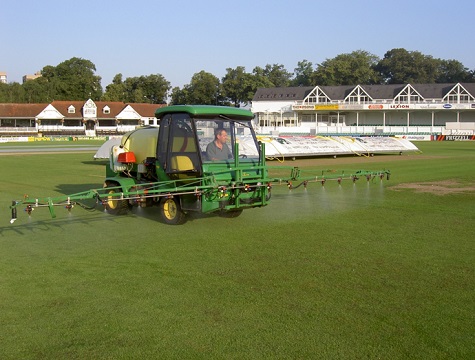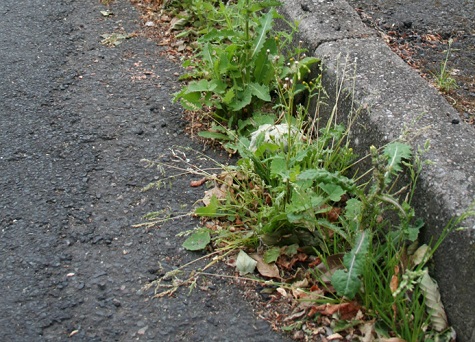
In the first of this series of articles, we sought to get a clearer definition of what sustainability is and what it means to an organisation, especially in the amenity horticulture sector. Sustainability comprises three pillars or components namely economic viability, environmental protection and social equity. The definition of these is important when any organisation seeks to become more sustainable, or indeed seeks to deliver more sustainable products and services to its customers. The remaining articles on this subject will now look more closely at various sub sectors of, and activities in amenity, and those providing services to them which hopefully will help all readers in their own search for sustainability. Previously we considered Sustainability In Practice, Sustainability At The Sharp End, and Sustainability In Supply.
This month we give a particular focus on the control and management of weeds in amenity spaces.
The need to control or manage weeds (plants growing in the wrong place) is a requirement for all involved in maintaining and developing amenity and sports spaces. Indeed, it is essential so that such areas can be kept safe, healthy and fit for purpose. On hard surfaces, excessive weed growth can create slip hazards, on sports pitches impact on playing conditions and even in areas such as wild flower meadows, control of certain species is important to avoid competition problems. Effectively, weed management is an essential component of sustainability – protecting the environment, place and people.
Prior to the UK leaving the European community, it was subject to various directives, one of which was entitled the Sustainable Use Directive (SUD). Arising from this, each member country had to have in a place a National Action Plan (NAP) which established legal requirements and guidance, applicable to all involved in weed, pest and disease management in agriculture and horticulture. The current UK plan is very much based upon guidance and establishing targets but there are some legal requirements in terms of operator training, sprayer testing and obligations when purchasing plant protection products. In amenity, the voluntary organisation which acts as the link between government and the sector on such matters is the UK Amenity Forum. This seeks to work with all involved to promote best practice and help meet the requirements and targets set out in the plan.
Following the UK departure from the EU, the National Action Plan is under review and a new one was due over a year ago. It is still delayed, caught up in the political approval process, so for the time being the current one NAP applies. However there are some clear messages emerging from government about the future plan which are very relevant to weed management operations, and these will form the core of this article. The key emphasis going forward will undoubtedly be on adopting sustainable practice. The plan will seek assurance that all approaches to the task of weed control and management are undertaken in the most sustainable manner by adopting an integrated approach.

Adopting an integrated approach is often referred to but exactly what does it mean? Just as there can be misunderstandings of what sustainability means, the same applies to the term integrated. In terms of weed management, some jump to a conclusion that it means not using herbicides; some use the language of seeking alternatives. In truth, taking an integrated approach to weed management involves assessment of all the factors and methods involved including plant protection products so as to choose the most appropriate mix for a given situation which is economic, efficient and effective and minimises impact upon the environment and protects the public. Taking an integrated approach provides the best sustainable practice.
How is it done? Well for any given situation it begins with producing a plan, often referred to as an integrated weed management plan (IWM), which needs to consider the following:

All of this can seem quite daunting but it really does not need to be complex or involve lengthy documentation. It does however require evidence that all stages have been considered. The outcome is a demonstration of best sustainable practice. The Amenity Forum have excellent guidance on all of this and a template to help crate integrated weed management plans, well worth seeking a copy (www.amenityforum.co.uk).
Any article on this topic though cannot avoid addressing the debate on pesticides. There are active lobby groups who believe that all such products are unacceptable and unsustainable. They are entitled to their view but, as with all these things, it is important to take a balanced and evidence based perspective. Undoubtedly, in years gone by, some of the pesticides used have been proved to be unsafe and removed. However existing products are rigorously tested (far more so than for many other domestic ones) and on-going review and regulations apply in terms of their storage and use. Being sustainable in weed control is not about giving up these tested and approved pesticides as such but ensuring that, where their use is needed, application is targeted and minimised with weeds being managed in an integrated approach.
And in all the approaches to weed management and sustainability, carbon emissions and footprint must be considered. A recent comprehensive study, undertaken by independent experts and academics, looked at a range of approaches to weed control on city streets. Its results were very significant in that, taking account of all the factors and adopting a life cycle analysis, using plant protection products, far from being the least sustainable approach, was indeed often the best. Again more on this in a future article.
Throughout this series of articles, I keep coming back to what sustainability really means and its three core components. Taking a balanced and integrated approach to weed management is the best policy and indeed many are almost certainly adopting such approaches without knowing. I recently spoke to a manager of sports pitches and related areas in a city who was keen to adopt sustainable practice. She described her approaches to weed management and was surprised to hear from me that she was already very much adopting sustainable practice; she just did not realise. Adopting sustainable practices need not involve a radical approach, small steps may be all that is needed. Whatever approach is taken to managing weeds needs to be economic, efficient and effective, minimising impact on the environment as much as possible. Managing golf fairways and greens demands proper control of weeds to ensure playing conditions are fit for purpose but, in the rough areas, more emphasis can be put on diversity and encouraging wildlife. Producing conditions which minimise weed problems is also important, all part of a fully holistic approach.
All of us with a little work can contribute to a more sustainable approach. It was Gordon Hinkley who said "without hard work nothing grows but weeds."
The next article in this series will look more closely at innovation, research and trials works for the amenity sector and explore how sustainability is driving the direction of this important area.